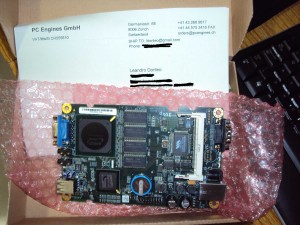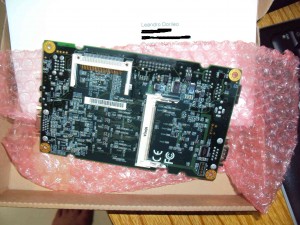Yeah! it`s came the time to write another report on GSoC status. In fact I`ve – intentionally – postponed it for quite some time and it doesn`t exactly mean there was a lack of informative emails between me and Marc(my mentor).
The need to finish some stuffs justifies – in some ways – the aforementioned delay. I understand you don`t need to report you aren`t done with something, a mail stating “I`m not done yet” would be enough – well, maybe not anyway…
OpenEmbedded Journey
With the second half of my project I jumped in the OpenEmbedded ecosystem and believe it, I`ve loved to get in touch with.
Putting my hands on OE is something I`ve planned for some time, I just hadn`t had the time to do so.
OpenEmbedded is something amazing, and it does what I realized years ago when I worked with gentoo. I always saw gentoo as a great meta-distribution, something you can bend and forge as you need – customizing it according to your needs.
Despite all the conceptual things touching OE wasn`t as easy as I initially tought it would. Bitbake(the great maestro behind OE) was designed with portage in mind and theoretically it was I good advantaged to me – look, theoretically.
Nothing is exactly smooth as you plan, you`ll always get troubles in the way – with OE wasn`t an exception.
OE transitions and yocto project
One of the biggest problems I faced was mainly due the transition the OE project is getting through. The docs(Getting started wiki page for example) are out dated and you get conducted by the old code base, and trust me, it`s not a good way to get started.
My first two weeks was full of crazy hacks, searching for old tarballs, setting up local source repositories, doing everything I could to make that thing to work – it was a bad race doing my best to proof the howtos.
The true is OpenEnbedded has moved to what we name bblayer, it`s a bitbake feature to ease to extend a base system. The intention(as I see) is to keep a minimal, clean and stable set of core packages and yet make it possible to “third party” vendors to append it to fit their needs.
The yocto project has extensively used OpenEmbedded as their base system, both the projects have exchanged a lot and sometimes you loose yourself if you`re touching one or the other. One of the tools provided by yocto project is Poky – which`s actually an OE layer.
There isn`t plenty of docs describing how the bblayer and bbappend work – the bitbake docs aren`t much precise and the OpenEmbedded barely mention it, yocto just describes how it`s fit within poky(or something close to that).
I would really like to recommend newcomers to first play with poky then later consider starting a new third-party layer.
The project as a bblayer
A third party layer is what best fits my project, not exactly a full yocto/poky layer, maybe and extension of it or not even that but an own layer itself, to accomplish that I had to experiment a lot, setting the environment up and watching how everything get together.
Packaging
After many years not touching a single ebuild and having never touched a bb package I jumped in the task to pack some components. The spice client has a bunch of dependencies – of course, I hadn`t to pack everything myself, a great number of things were already done.
Among the things that got me longer then I expected was cyrus-sasl, the old OE tree had it packaged but it was an old version – should I mention it was broken as well?
So, bringing the recipes wouldn`t be enough but I would have to fix things up, once fixing stuffs was the only alternative I decided to upgrade it to the latest version 2.1.31.
Anyway, it brought me a lot of work to pick patches to fix its building and fixing what hadn`t got fixed already. My final PR was 177 what means I came through 177 builds, debugging, testing and working everything around.
The cyrus-sasl code has a bug introduced after 2.1.21, it wasn`t possible to build it –with-static. I did an ugly and ridiculous fix. Everything I found out there – searching the internet – was even uglier. Suggestions to run make twice was one of them. The build system was kind of messed up.
The other packages weren`t so painful and I could quickly move forward.
Slimming the image
I still have to slim few things, I need to cut some X11 packages I included in the image, append the yocto kernel with my own .config and write a small shell script(or something smarter than that) to launch the spice client.
BuildRom
The first thing I worked on in the beginning of my project was buildRom, I wanted to bring all the tasks involved on building the OS image and bios/firmware into to it. But, with my move to OE for building the OS image I realized I could go the reversed way and bring the tasks for building the bios/firmware to OE.
Now I`ve manually packaged the things but have already started to write bbclass to controll bios/firmware + image building and packaging them. I see it as a second generation to BuildRom project, a OE layer with coreboot bb packages and recipes plus the needed bb classes.
Conclusion
After the great effort I had, getting in touch by the first time with OE, I feel comfortable to say it was a good experience to me, I realized many possibilities. I`m really happy with everything I learned on the path and I`m sure I still have a lot to contribute to Coreboot and OE as well.





